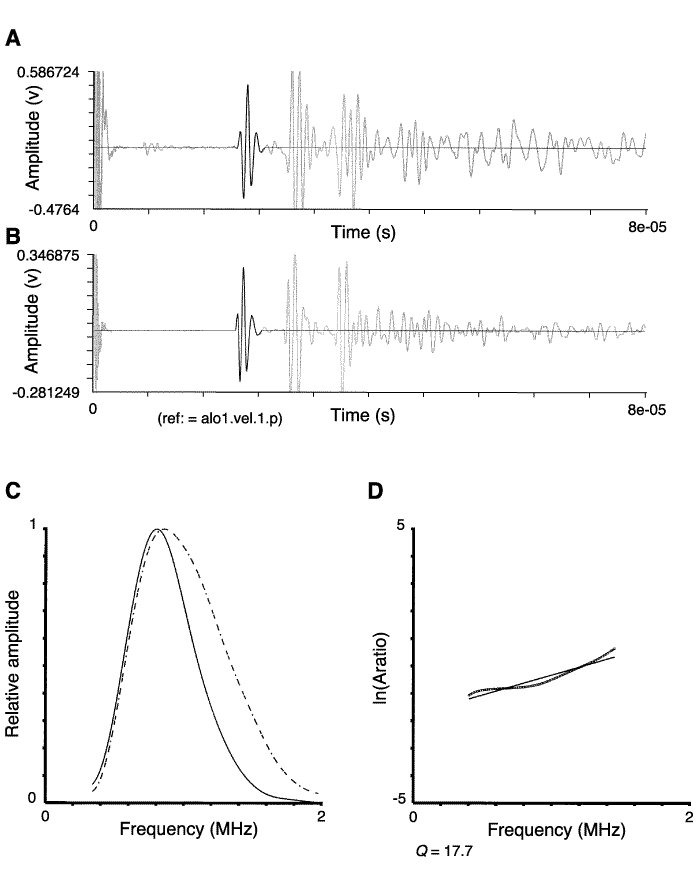Figure
F4. The spectral ratio method is applied to obtain compressional wave
attenuation by comparing the spectra from an aluminum reference to the spectra
for a gabbro sample. A. Time series of the pulse through gabbro.
The spectra is computed for the waveform with a bold line. B.
The pulse through the aluminum reference is unattenuated. C.
The spectra are compared: solid line = gabbro, dashed line = aluminum. The loss
of high frequencies due to attenuation in the gabbro is evident. D.
The natural logarithm of the ratio of the two spectra is displayed as a function
of frequency as open circles. The solid line through these open circles is the
least-squares fit line. For intrinsic attenuation in an infinite, homogeneous
medium, theory predicts that the natural logarithm of spectral ratios should be
a straight line. Q is computed from the slope (m) of the ratio of
the spectral values of the aluminum to the gabbro as follows: Q =  xgab/(c x m), where xgab
= the propagation distance in gabbro, and c = the compressional
velocity in gabbro. In this case, Q = 17.7.
xgab/(c x m), where xgab
= the propagation distance in gabbro, and c = the compressional
velocity in gabbro. In this case, Q = 17.7.

![]()